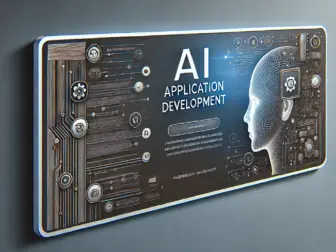Tag - building AI apps
Mastering the Art of Building AI Apps: A Comprehensive Guide
Artificial Intelligence (AI) has become a transformative technology that is reshaping industries across the globe. From healthcare to finance, AI is revolutionizing the way businesses operate and interact with their customers. One of the key applications of AI is in the development of AI apps, which are software programs that leverage machine learning algorithms to perform specific tasks or provide intelligent insights.
Building AI apps requires a deep understanding of machine learning, data science, and software development. It involves designing algorithms that can learn from data, make predictions, and adapt to changing environments. In this comprehensive guide, we will explore the key steps and best practices for building AI apps that deliver real value to users.
Step 1: Define the Problem
The first step in building an AI app is to clearly define the problem you are trying to solve. This involves understanding the needs of your target users, identifying the key challenges they face, and specifying the goals and objectives of the app. By defining the problem upfront, you can ensure that your AI app is focused on delivering meaningful results and adding value to your users.
Step 2: Collect and Prepare Data
Data is the fuel that powers AI apps. To build an effective AI app, you need to collect and prepare high-quality data that is relevant to the problem you are trying to solve. This may involve gathering data from various sources, cleaning and organizing the data, and preparing it for analysis. Data preparation is a critical step in the AI app development process, as the quality of your data will directly impact the performance of your machine learning models.
Step 3: Choose the Right Algorithms
Once you have collected and prepared your data, the next step is to choose the right algorithms for your AI app. There are a wide variety of machine learning algorithms available, each with its own strengths and weaknesses. It is important to select the algorithms that are best suited to the problem you are trying to solve and the type of data you have collected. This may involve experimenting with different algorithms and tuning their parameters to achieve optimal performance.
Step 4: Train and Test Your Models
After selecting the algorithms, the next step is to train and test your machine learning models. This involves feeding the algorithms with your training data, allowing them to learn patterns and relationships in the data, and evaluating their performance on a separate test dataset. Training and testing your models is an iterative process that may require fine-tuning the algorithms, adjusting the data, or retraining the models to improve their accuracy and reliability.
Step 5: Deploy and Monitor Your AI App
Once you have trained and tested your models, the final step is to deploy your AI app and monitor its performance in real-world settings. This may involve integrating your models into a software application, testing them with real users, and collecting feedback to improve their accuracy and usability. Monitoring your AI app is crucial for ensuring that it continues to deliver value to users and remains effective over time.
Building AI apps is a complex and challenging process that requires a combination of technical skills, domain expertise, and creativity. By following the key steps and best practices outlined in this guide, you can master the art of building AI apps and create innovative solutions that drive business success and create value for users.
